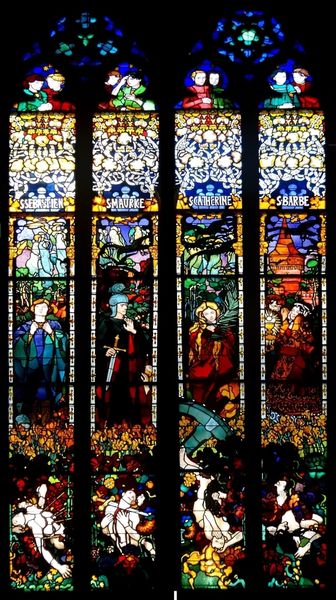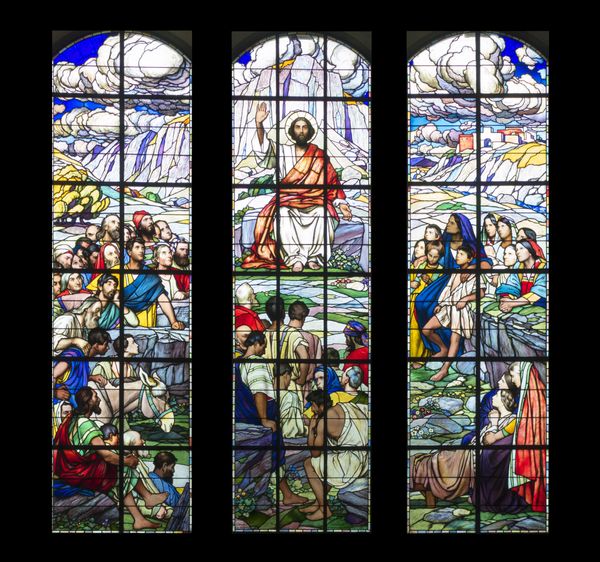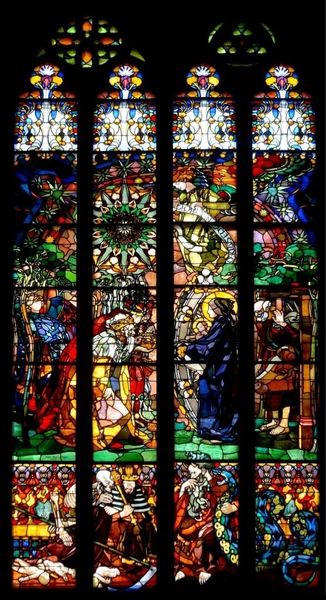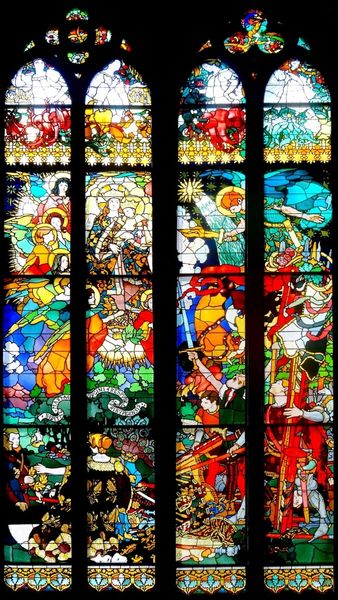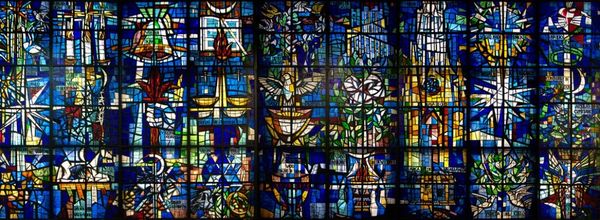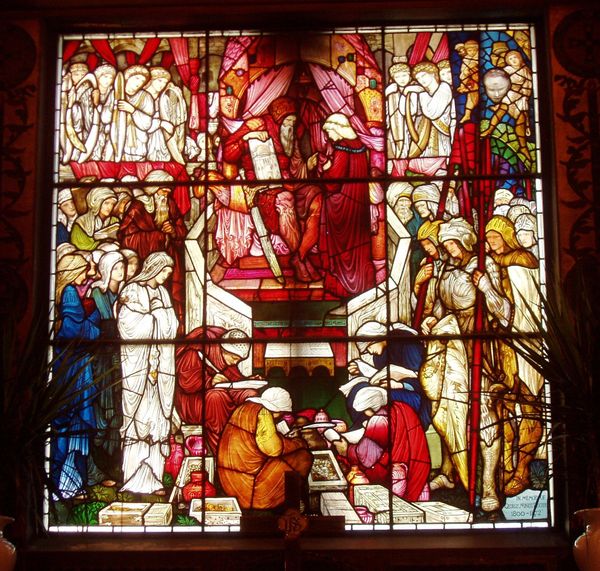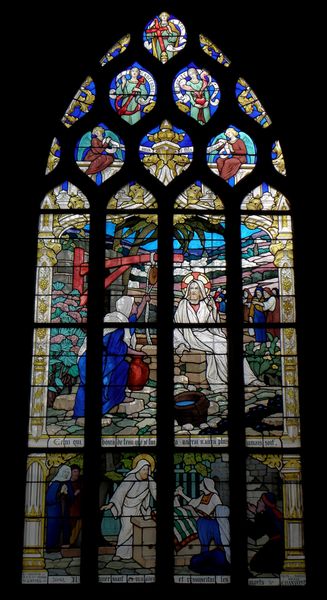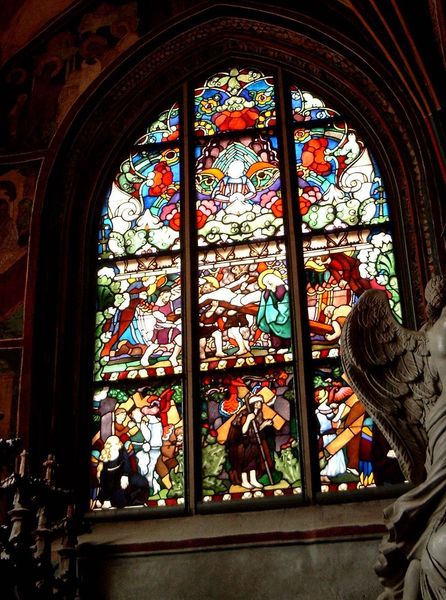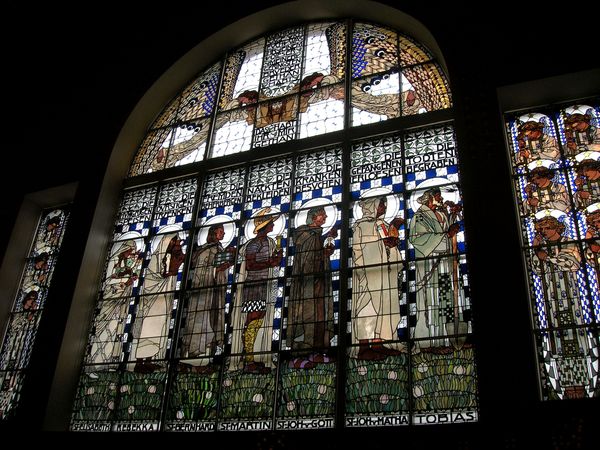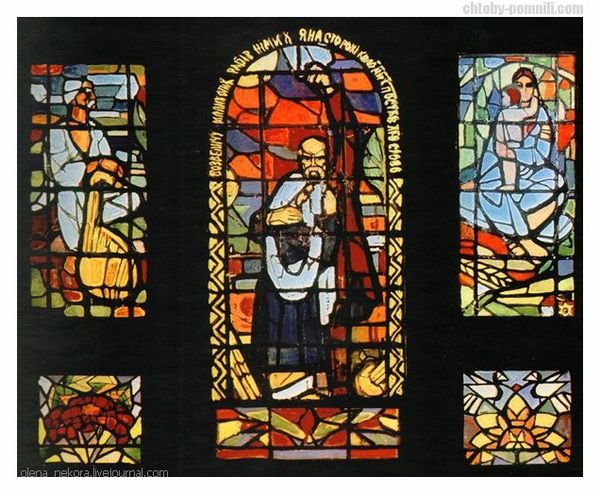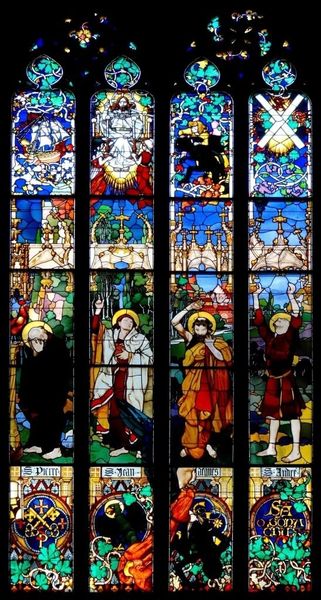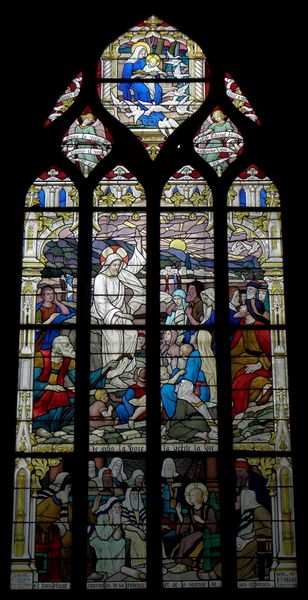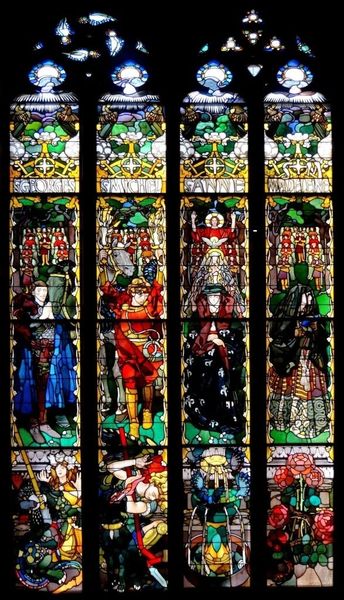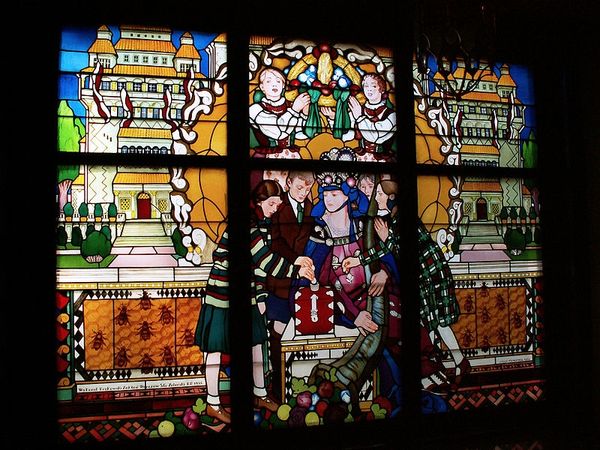
mosaic, glass
#
mosaic
#
art-nouveau
#
geometric composition
#
mosaic
#
geometric pattern
#
glass
#
abstract pattern
#
linear pattern
#
geometric
#
symbolism
Copyright: Public domain
Curator: Let’s discuss Józef Mehoffer's "Eucharist," a striking stained-glass mosaic completed in 1901. You can find it installed within Fribourg Cathedral in Switzerland. What’s your initial impression? Editor: It feels overwhelming, but in a good way! So rich, complex…it practically vibrates with energy. The vibrant colors, the sheer density of detail – it's almost ecstatic. Curator: Exactly. Notice how Mehoffer employs the lead lines not just to separate the colors but to construct an almost graphic framework. Semiotically, consider how each piece of glass acts as a signifier, contributing to the grand narrative. The light pouring through the glass fragments and coalesces, giving structure. Editor: It definitely seems designed to instill awe and reinforce Catholic doctrine. It begs a conversation about access and control… the placement high up demands submission of its observers. Given its historical moment, the fin-de-siecle anxieties are clearly coded within; do you see a parallel in society through the stained-glass window? Curator: An astute point. Consider how the Art Nouveau elements – the curvilinear lines and organic motifs – work in contrast to the rigid geometric pattern of the mosaic medium itself. The use of linear and geometric arrangements, each fragment acting as an individual point of signification... this juxtaposition produces an enthralling visual tension. Editor: But even those decorative details carry weight. The patterns, the very style itself was co-opted by wealthy benefactors who endorsed a national identity in direct contestation with social struggles; I see this artwork being part of a wider, far less innocuous cultural-historical canvas. I believe we can look at this to learn how symbols that initially carried subversive connotations end up serving conservative agendas. Curator: True, the context does shape our understanding, of course. But looking specifically at how light is refracted and disseminated can reveal its very essence in all of its material form. The mosaic design itself functions as a symbolic microcosm of the world, viewed from an ideological point of view of the Catholic Church, no less. Editor: Well, precisely that context reveals much more when analyzed this way; after our conversation, I leave seeing "Eucharist" now less as just light and color, but as a historical manifesto whose purpose transcends purely aesthetic appeal, embedding it in the larger narratives that dictate our cultural perception. Curator: An excellent reminder of art’s many lives. For me, the pure beauty of light transformed will always remain a testament to art's profound communicative power.
Comments
No comments
Be the first to comment and join the conversation on the ultimate creative platform.
